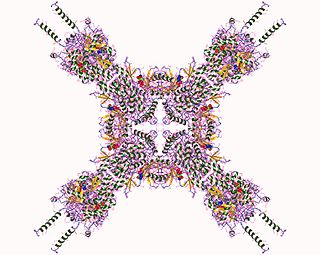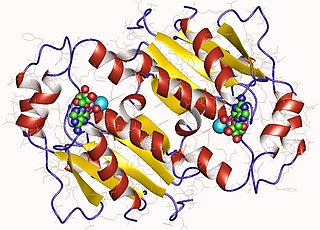| dephospho-CoA kinase | |||||||||
|---|---|---|---|---|---|---|---|---|---|
| Identifiers | |||||||||
| EC no. | 2.7.1.24 | ||||||||
| CAS no. | 9026-83-9 | ||||||||
| Databases | |||||||||
| IntEnz | IntEnz view | ||||||||
| BRENDA | BRENDA entry | ||||||||
| ExPASy | NiceZyme view | ||||||||
| KEGG | KEGG entry | ||||||||
| MetaCyc | metabolic pathway | ||||||||
| PRIAM | profile | ||||||||
| PDB structures | RCSB PDB PDBe PDBsum | ||||||||
| Gene Ontology | AmiGO / QuickGO | ||||||||
| |||||||||
In enzymology, a dephospho-CoA kinase (EC 2.7.1.24) is an enzyme that catalyzes the chemical reaction
- ATP + dephospho-CoA ADP + CoA
Thus, the two substrates of this enzyme are ATP and dephospho-CoA, whereas its two products are ADP and CoA.
This enzyme belongs to the family of transferases, specifically those transferring phosphorus-containing groups (phosphotransferases) with an alcohol group as acceptor. The systematic name of this enzyme class is ATP:dephospho-CoA 3'-phosphotransferase. Other names in common use include dephosphocoenzyme A kinase (phosphorylating), 3'-dephospho-CoA kinase, and dephosphocoenzyme A kinase. This enzyme participates in pantothenate and coa biosynthesis.









